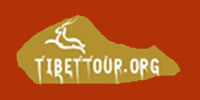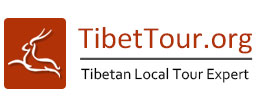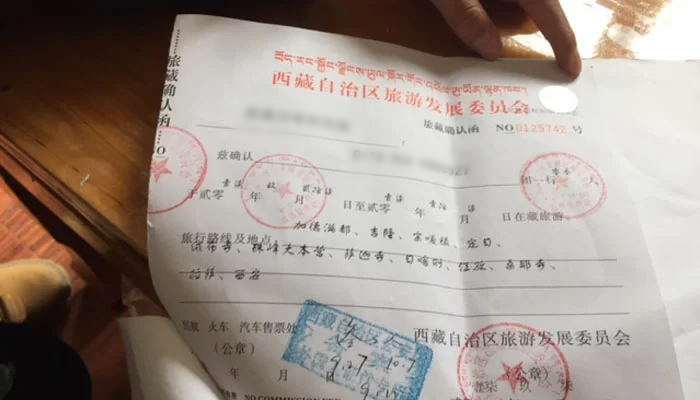Day 1: Arrive in Beijing, please go to our reserved hotel by taxi by yourself.
When international flight lands in Beijing, please take a taxi by yourself to our reserved hotel. The rest of the day is free for you to be on your own.
Stay overnight in Beijing.
Day 2: Beijing - Day tour to explore ancient Beijing, visit Forbidden City, Temple of Heaven and Summer Palace
Today is a guided tour to Forbidden City, Temple of Heaven, Summer Palace which are the traditional must-see places in Beijing. These attractions present to the visitors an image of how the ancient Chinese emperors manage the country, what their family life is, how they spent leisure time, how they sacrifice gods etc.
Stay overnight in Beijing.
Day 3: Beijing - Day tour to Mutianyu Great Wall
The Great Wall tour proves that China was one of the strongest countries in its history. Stretching thousands of kilometers, the Great Wall protected the ancient Chinese against the invasion of the enemy from its north side for more than 1000 years. The Great Wall was listed as one of the world's eight wonders. Mutianyu Great Wall, featured “graceful”, enjoy the best quality among all Wall sections, 80km north-east of Beijing with 22 ancient watchtowers, about one every kilometer. (Cable car is optional if you do not want to walk)
Stay overnight in Beijing.
Day 4: Fly from Beijing to Lhasa
Today, you will take the flight from Beijing to Lhasa. When you arrive at the airport, your guide will greet you and take you to your hotel. You can view the Yarlung Tsangpo River (the Longest and largest river in Tibet) and Lhasa river on you way to Lhasa.
After arriving in Lhasa, you can take a rest and get acclimatized to high altitude. The rest of the day is for you to freely explore the city.
Stay overnight in Lhasa.
Day 5: Lhasa day tour to visit Potala Palace, Jokhang Temple, Barkhor Street
The tour will begin from UNESCO World Heritage site - Potala Palace, which is also the winter palace of Dalai Lama. It's situated at 12,139 feet above sea level. It's a 13-story high building that contains over 1,000 rooms, various statues, stupas, murals, and artifacts. Then continue to Jokhang Temple, another UNESCO World Heritage site. It’s a spiritual center for Buddhists in Tibet. Next to the temple there is Barkhor Street, filled with pilgrims and street vendors, selling traditional Tibetan items such as prayer wheels and jewelry.
Stay overnight in Lhasa.
Day 6: Lhasa day tour to visit two important monasteries in Lhasa, Sera & Drepung
In the morning, tourists are going to visit Drepung Monastery which was one of the “three greet” Gelug monasteries of Tibet and was founded in 1416. Ganden palace is used as Dalai Lama’s palace in the Drepung before moving to the Potala palace.
In the afternoon, tourists are going to visit Sera Monastery, which was also one of the “three great” Gelug monasteries of Tibet and was founded in 1419. The highlight is the Monks debate at around 3 - 5 in the afternoon.
Stay overnight in Lhasa.
Day 7: Lhasa (3650m) to Shigatse (3900m) via Gyantse
In the morning, drive from Lhasa to Shigatse. On the way, drive over the Gampala pass (4790 m), and tourists will have a glimpse of Yamdrok-tso (4400m). The Lake is surrounded by many snow-capped mountains and in the distance, clients can have spectacular views of Holy Mount Nyenchen Khangsar (7191m), the highest mountain near Lhasa. Gyantse was historically Tibet's third largest city (after Lhasa and Shigatse).
In Gyantse, tourists will visit the famous Pelkor Monastery and Gyantse Kumbum. After one and a half driving, we arrive in Shigatse, which is the second largest city in Tibet. In Shigatse, tourists will visit Tashilhunpo Monastery, the seat of Tibet's second highest incarnation, the Panchen Lama.
Stay overnight in Shigatse.
Day 8: Shigatse (3900m) to Everest (5200m) via Tingri
Drive to Lhatse, it is a small town where tourists can have lunch. Then, head to Shegar and if the weather is clear enough then on the way down to Shegar tourists will view the Mt. Everest in the distance. After 4 to 6 hours’ drive, tourists will arrive at Rongbuk Monastery but on the way, they will pass one of the highest Passes in Tibet (pang la pass height 5050m) from that’s pass they will view the whole five highest peaks in the world.
Stay overnight at tent or Rongbuk monastery guest house.
Day 9: Everest (5200m) to Kyirong Town (2600m)
Open your eyes, and wake up to the first sunlight shining over the pyramid-shaped summit of imposing Mt. Everest. Grab your camera for an epic shot and stroll to the Rongbuk Monastery, exploring this world’s highest Buddhist compound. If you wish, you can do the meditation and experience the unparalleled tranquility and harmony there. Or you can interact with monks and nuns with the help of guide to learn more of their unique spiritual life.
The temperature can get bitterly cold in the early morning. Do wear enough cloths like your down jacket, scarf and mittens to protect the extreme coldness.
Then drive to Tongla pass to see the panoramic view of Himalaya mountain range. Then driving down to Kyirong, where is surrounded by forest with ice-capped mountain background. The altitude is 2600m at the border.
Stay overnight in Kyirong.
Day 10: Exit China through Kyirong Border (2600m), then drive to Kathmandu
In the morning, drive clients to the Sino-Nepal border - Kyirong, tour guide will assist clients to check out of the border. After going through the immigration, Nepalese driver will pick you up at the border and drive to Kathmandu. The road to Kathmandu is bumpy but the scenery is quite beautiful, you can see the deep gorges, rivers all through the way. the road condition is rough in Nepal so this 160km road takes a whole day.
Stay overnight in Kathmandu.
Day 11: Day tour to Kathmandu City, Swayambhunath and Patan City
Kathmandu’s Durbar Square is one of three durbar (royal palace) squares in the Kathmandu Valley. It is the site of the Hanuman Dhoka Palace Complex, which was the royal Nepalese residence until the 19th century and where important ceremonies taken place. Swayambhunath the golden spire of the 5th-century Swayambhu stupa is adorned with a colourful fluttering of prayer flags; it crowns a hill overlooking the Kathmandu Valley and offers fantastic views over the city of Kathmandu.
The last site you will visit for today is Patan City which is the second largest town in Kathmandu valley. Patan's central Durbar Square is entitled in the World Heritage Site and absolutely packed with temples, the Golden Temple which is the unique Buddhist Monastery was founded in the 12th century, is a large rectangular building has three roofs and a copper gilded facade with the images of Buddha and Avalokitesvara where there are Buddha images and illustrations on the walls.
Stay overnight in Kathmandu.
Day 12: Day tour to Pashupatinath, Bodhnath and Bhaktapur City
Pashupatinath the most important Hindu temple in Nepal, the old buildings on the site were destroyed by Moslem invaders in the 14th century, its stone linga smashed to dust, but it rose again behind their retreating backs. Succeeding monarchs reinstated the temple and the images. Bouddhanath is among the largest stupas in South Asia, and it has become the focal point of Tibetan Buddhism in Nepal. The white mound looms thirty-six meters overhead. The stupa is located on the ancient trade route to Tibet, and Tibetan merchants rested and offered prayers here for many centuries.
Bhaktapur Durbar Square is a conglomeration of pagoda and shikhara style temples grouped around a fifty-five window palace of brick and wood. The square is one of the most charming architectural showpieces of the Valley as it highlights the ancient arts of Nepal.
Stay overnight in Kathmandu.
Day 13: Pokhara Sightseeing: Phewa Lake, Annapurna
After breakfast, depart for Pokhara from Kathmandu to do the sightseeing in Pokhara city. The World Peace Pagoda can be seen on top of a hill on the southern fringe of Phewa Lake. It has four images of the Buddha facing the four directions. The dome-shaped pagoda is an impressive sight, and its hilltop location commands a great view. It is a great vantage point which offers spectacular views of the Annapurna.
In the afternoon, do the boating at Phewa Lake. The center of attraction in Pokhara is the Phewa Lake - the second largest lake in the Kingdom. It is the largest and most enchanting of the three lakes that add to the resplendence of Pokhara. Here, one can sail or row a hired boat across to the water or visit the island temple in the middle. The favorite home base for travelers is the eastern shore.
Stay overnight in Pokhara.
Day 14: Pokhara to Chitwan (160km, 5-6 hours)
Chitwan - from alleys of the Valley to lush greenery, get ready to treat all your senses at Chitwan, the heart of the jungle. From being surrounded by the concrete jungle to entering the real jungle, this package has extremes to get you in adventure mode. From making way through the narrow gallis of Kathmandu and discovering architectural delights, you will be walking or riding through the jungle along with the wild animals you will discover by the Rapti River.
Stay overnight in Chitwan.
Day 15: Chitwan Jungle Park Exploration
Early morning you will visit the Jungle to refresh your spirit of adventure on a guided walk through the national park, returning to the lodge in time for breakfast.
You will follow a full day true jungle experience with the in-house expert naturalists including Bird watching, Elephant bathing and canoeing. You will also visit the small village of Tharu ethnic group to get a sense of what their world and lives are like through interactions with the locals.
A special sundowner can be suggested at the confluence of the Rapti River amidst spectacular sunset view.
Stay overnight in Chitwan.
Day 16: Chitwan to Lumbini: Lumbini Garden
After breakfast, you will travel overland from Chitwan to Lumbini, the birthplace of Lord Buddha, where has been revered as the place of holy pilgrimage. Lumbini has been included as a World Heritage Site by UNESCO.
Upon arrival, you will go walking through the Sacred Lumbini Garden where the Buddha was born converges on the Ashoka pillar. Visit the Maya Devi Temple with its bas-relief sculpture depicting Maya Devi holding on with her right hand to a branch of pipal tree and giving birth to the infant Buddha who stand up on a lotus pedestal.
Stay overnight in Lumbini.
Day 17: Tilaurkot Sightseeing
After breakfast, begin the trip by driving away 27km west of Lumbini to visit the important archaeological site, Tilaurkot, the ancient palace of King Suddodha (Siddhartha Gautam's father), where the Buddha spent his formative years as a Shakya Prince. Allow yourself for a moment to wander around and soak the atmosphere. There's a museum nearby, the Kapilvastu Museum; the pottery, jewelry and ornaments are gathered in-house.
End up the remarkable tour in Tilaurkot by visiting the shrines, monasteries and stupa near the sacred garden.
Stay overnight in Lumbini.
Day 18: Lumbini Back to Kathmandu
In the morning, leave Lumbini by road and drive back to Kathmandu. Check-in at hotel, the rest of the day is at your own leisure.
Stay overnight in Kathmandu
Day 19: Departure from Kathmandu
Our guide will transfer you to the Kathmandu airport and help you get on board.





























































